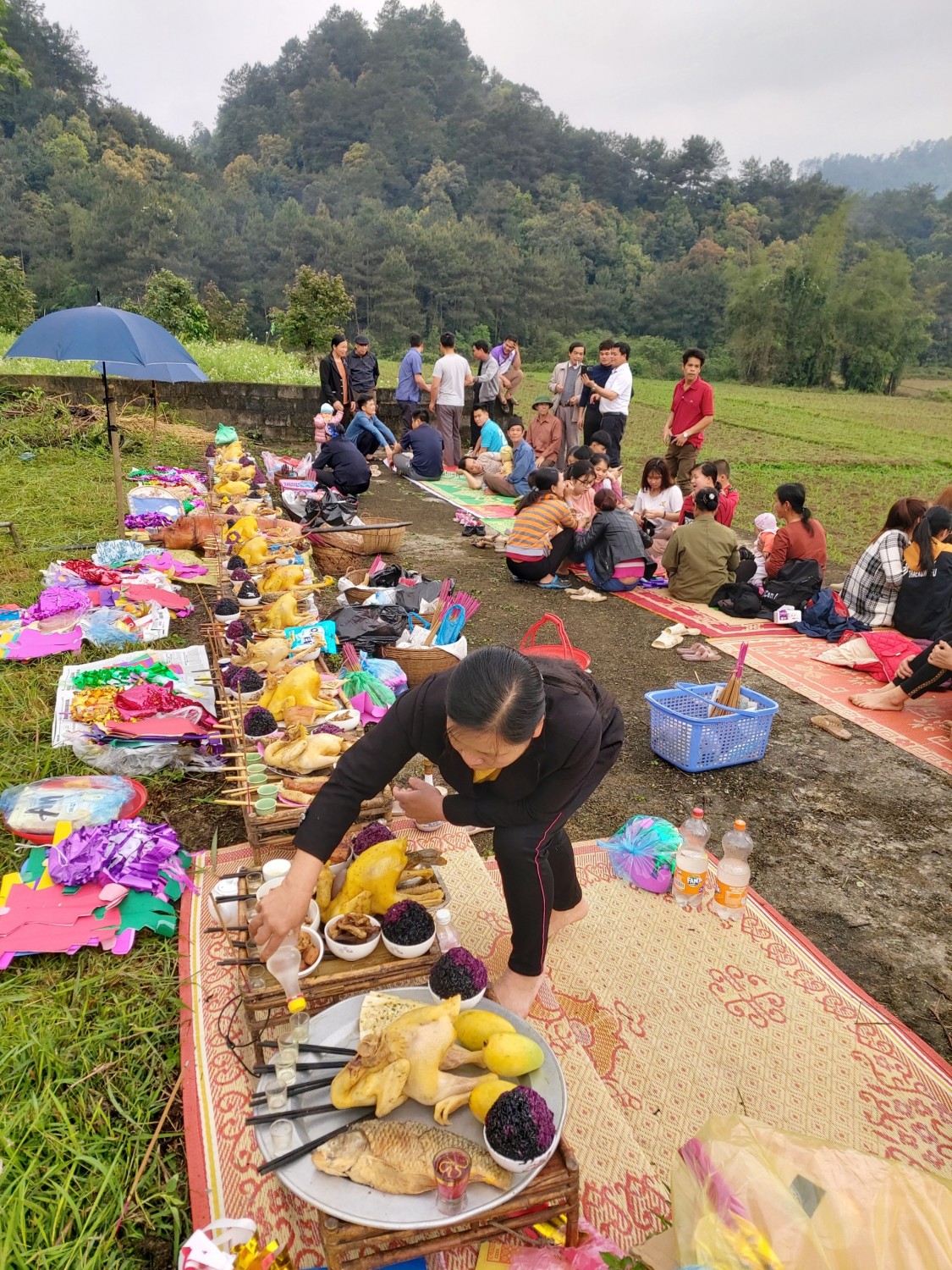Towards the origion tradition on the Qingming festival in Cao Bang
Annually once the March (lunar calendar) arrives, the Tay and Nung ethnic groups in Cao Bang are busy preparing for their celebration of the QingMing festival. This is one of the occasions for the family reunion and to express their gratitude to their ancestors and reminding them of their origion.
The QingMing festival (celebrated on the 3rd of March-lunar calendar) is accompanied with the custom of “Tomb-sweeping” practice. This is the time for people to renew or amend the tomb of their ancestors and family. The typical offerings presented to their ancestors will be incomplete without the steamed different color sticky rice, the color is from the juice of Magenta plant, Liquidambar formosana, etc mixed with rice. After steaming, people get sticky rice with different colors such as red, black, blue, purple and yellow. Then the rice is put into the small bowl and shaped like the mountains. Apart from that the offerings also include chicken, pork, fish, fruits, sweets, wine and fake money, etc. After finishing the custom at their ancestor altar, people prepare their offerings and bring with them shovels, hoes, and knives to the tombs of their ancestors. Once they arrive, the first thing they have to do is to clear the vegetations and bushes at and around the tombs, after that they set the offerings and spile the pole to inform their completion of the work. When people finish the rite, people in the family gather and have the food together near the tomb or at the head of the family. The old generation educate the younger generation about their ancestors and their family roots and remind them of the relatives who passed away.
The QingMing festival is not only for family reunion occasion, but functions as the glue for community building. The QingMing of Nung An people in Phuc Sen commune, Quang Uyen district celebrated, is among the famous one, on the lunar March season annually. The festival in this area is associated with the story of faithfulness and pure love of a couple. Due to backward practice of the feudalism, they had to commit suicide so that they can stay with each other forever. The QingMing festival is the opportunity for Nung An people to show their respects to the agricultural Gods and pray for the fruitful crops. This is the opportunity for Nung An people who live faraway from their hometown and visitors to come to pay a visit and experience traditional games; this is also the occasion for young couples to exchange their love songs.
The special practice on the QingMing festival in some villages is that villagers all go to the Village head land God to thank and give him the offerings and pray for the fruitful crops, favorable weather, good health for villagers, and good business. For example, the Land god rite in Keo Sy village, Thanh Nhat commune, Ha Lang district, people usually go to the Land god shrine under the Dalbergia odorifera tree, known as the “Coc May” shrine. Before the festival, villagers gather and assign task for each member household to prepare the offering, cleaning, clearing bushes, vegetations and prepare the joint meal. Apart from their share of a pig head, a chicken, incense, fake money, pole, wine, sticky rice, pork, each household also contribute a bow of rice to cook porridge. The rite is usually celebrated on the first or second of March (lunar calendar). At the end of the day when the preparation finished, representatives of household dressed up and bring with him the bowl and chopsticks to have the joint meal. This time the village head will check the attendance of households and the logistics team will inform the Land god the list of contribution of each household, and ask for permission to conduct the procedures of the rite. The village head will thank and pray the Land god for fortunes and fruitful crops. Then each household take turn to put the lighted incense on the altar, pour wine, burn fake money and spile the fortune pole. After they finish the rite, people line up and carry out three bowings. Once the rite finish, people together have the joint meal and share one bowl of porridge with each other as a simple of fortune gift of the Land god, and invite each other cups of wine. The meal with the porridge indicates the community connection and get ridge of misunderstandings among people.
The tradition of towards to the origin of Vietnamese in general and ethnic minority groups in Cao Bang in particular is one of the beautiful-cultural feature of ethnic groups, generation after generation remind each other of this tradition of their hometown and take it as the glue for community connection for the solidarity among the people to overcome difficulties and challenges.
Reader Comments
Newer articles
Older articles


